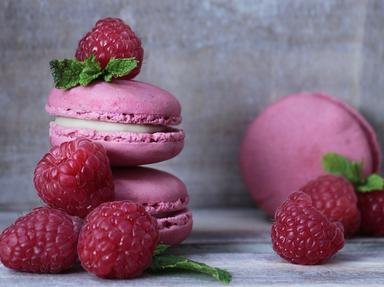Quiz Answer Key and Fun Facts
1. Variations on this confection of sugar or honey, egg white, and nuts, often wrapped in rice paper, may be found in many countries. What is it called in France?
2. The name of this confection was associated with the official French government during World War 2. Which aid to digestion is this?
3. Benedictine monks in Burgundy first made these dragee confections with an aromatic seed in the middle. What are they called?
4. Originally made by French nuns, which little cakes sound as though they belong in a bank?
5. This "designer" confection is notoriously difficult to perfect. Which is it?
6. Which confection, created by French chef Auguste Escoffier, was inspired by an operetta by Jacques Offenbach?
7. Yet another confection with religious connections, which traditional French Christmas chocolate represents four monastic orders?
8. Named after the Mona Lisa, which almond-flavoured sponge is used in the French confection known as Gateau Opera?
9. This wheel-shaped confection commemorates a French cycle race: which is it?
10. The subject of a trademark battle with a Chinese company, which French confection was granted Protected Geographical Indication (PGI) in 2015?
Source: Author
Mistigris
This quiz was reviewed by FunTrivia editor
Bruyere before going online.
Any errors found in FunTrivia content are routinely corrected through our feedback system.

